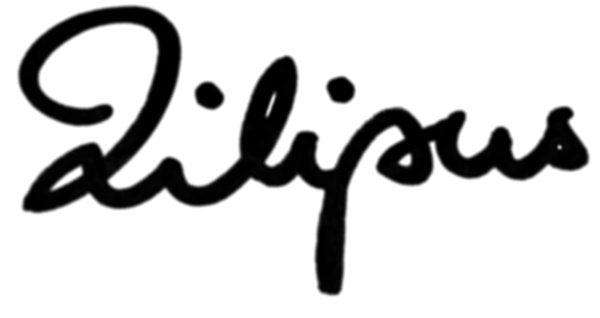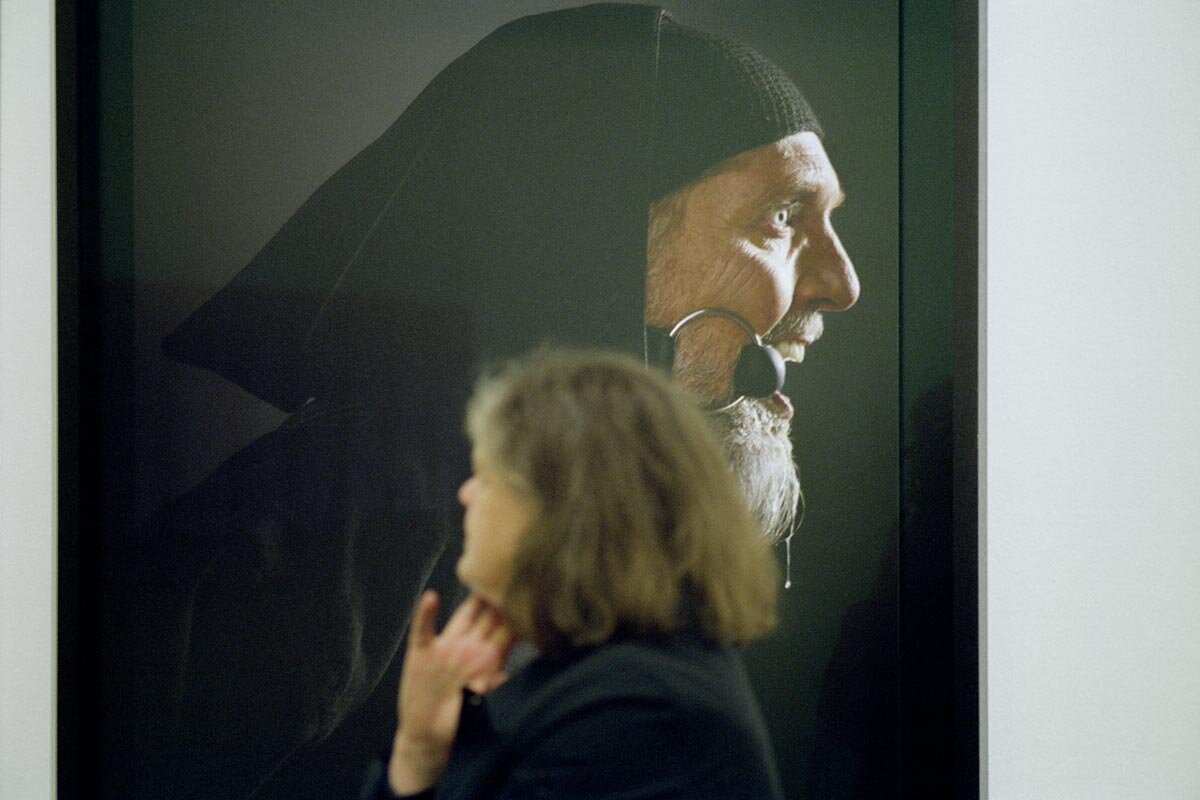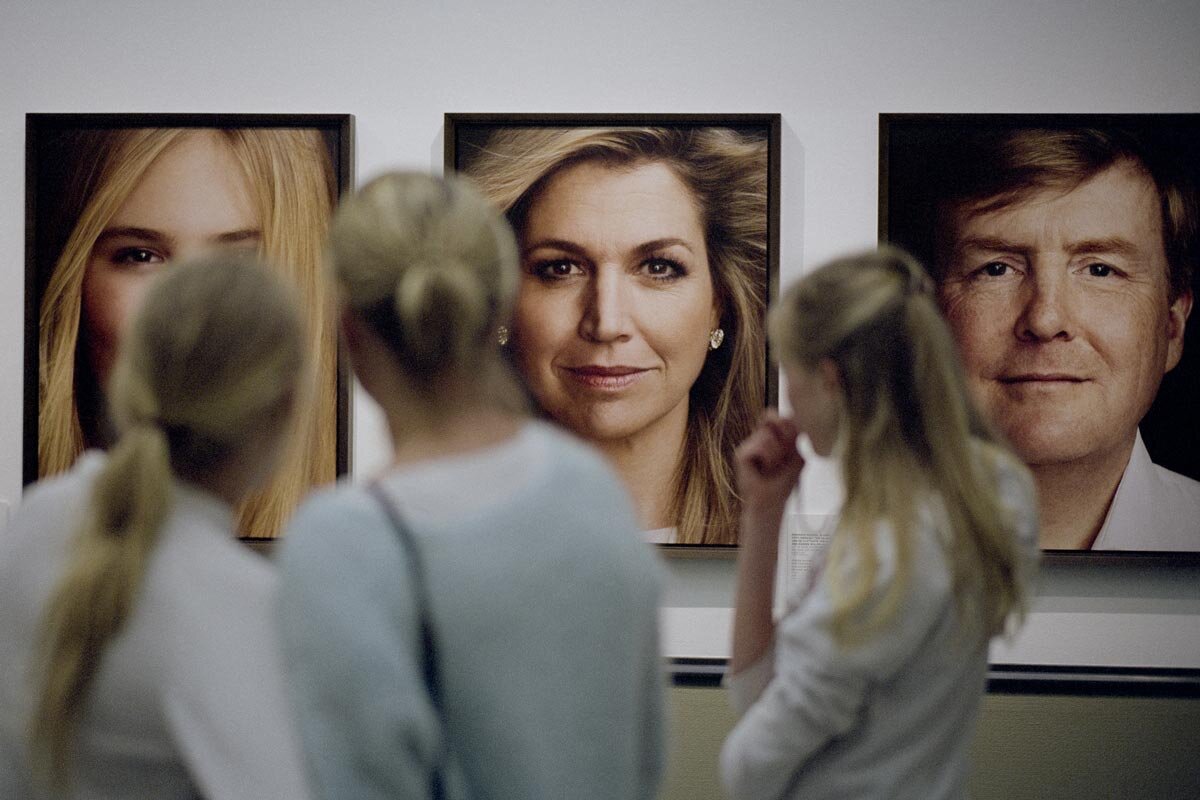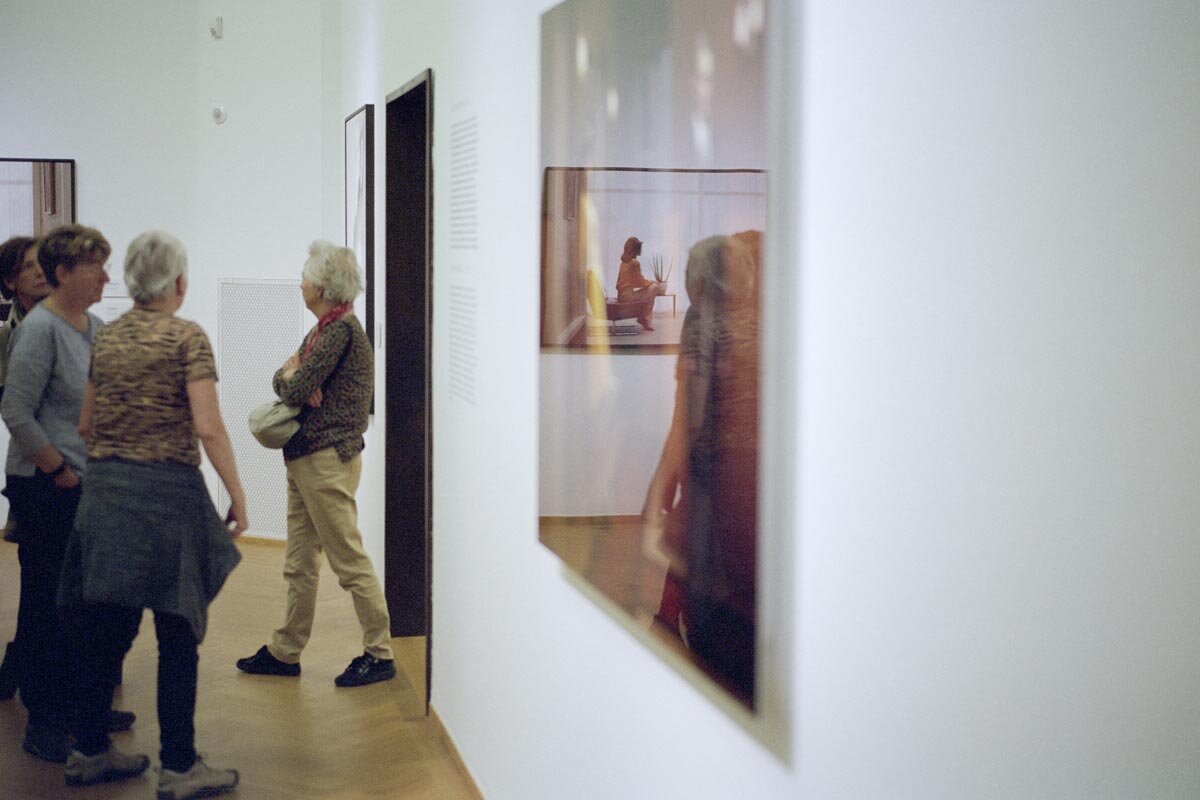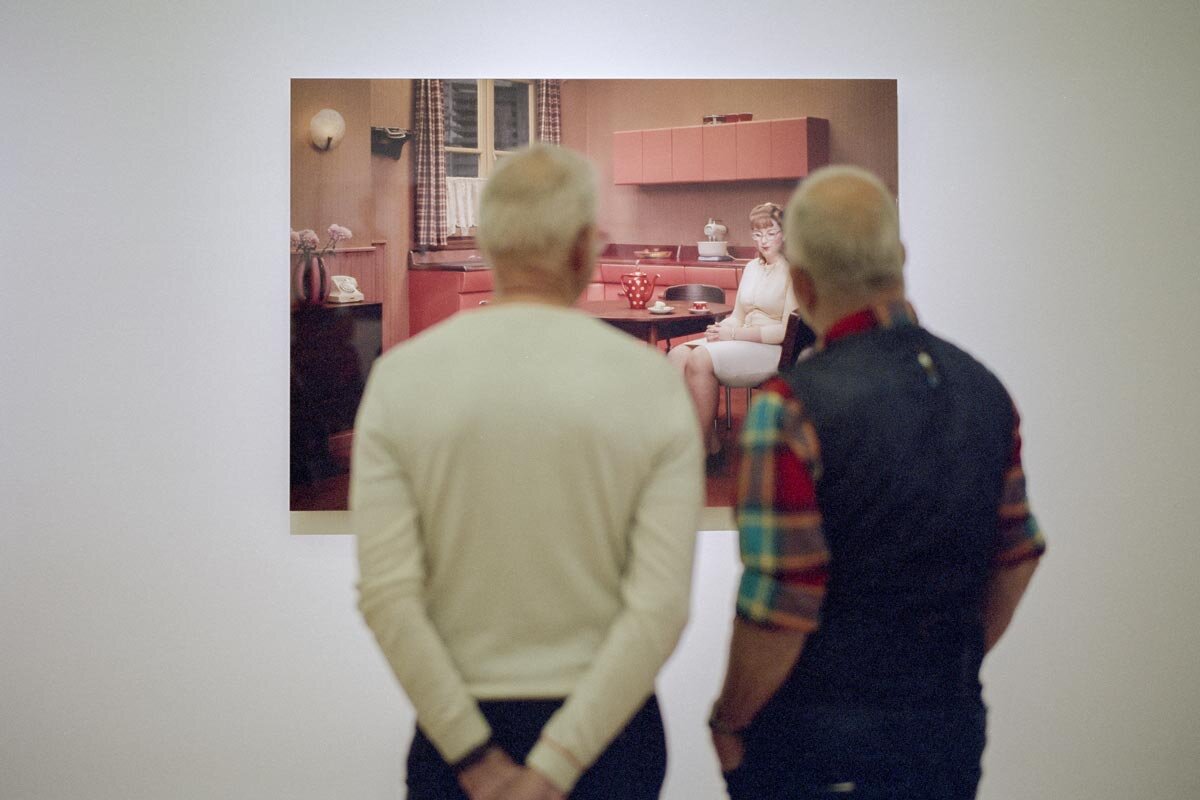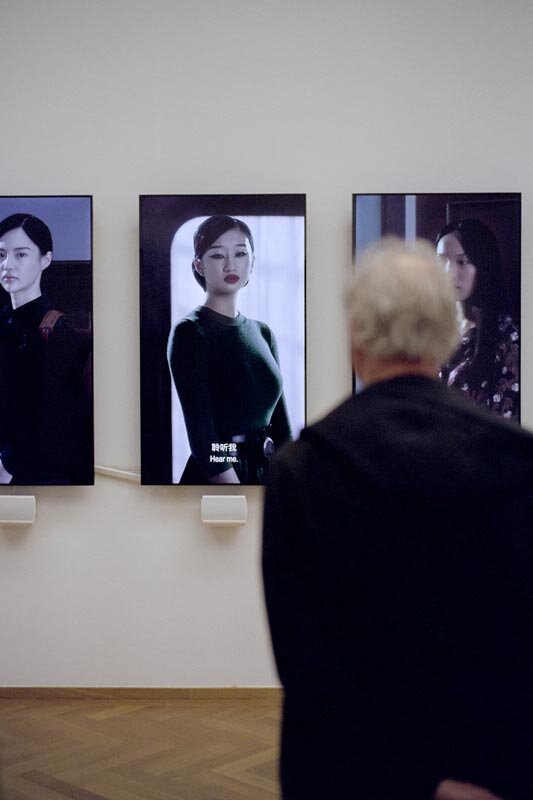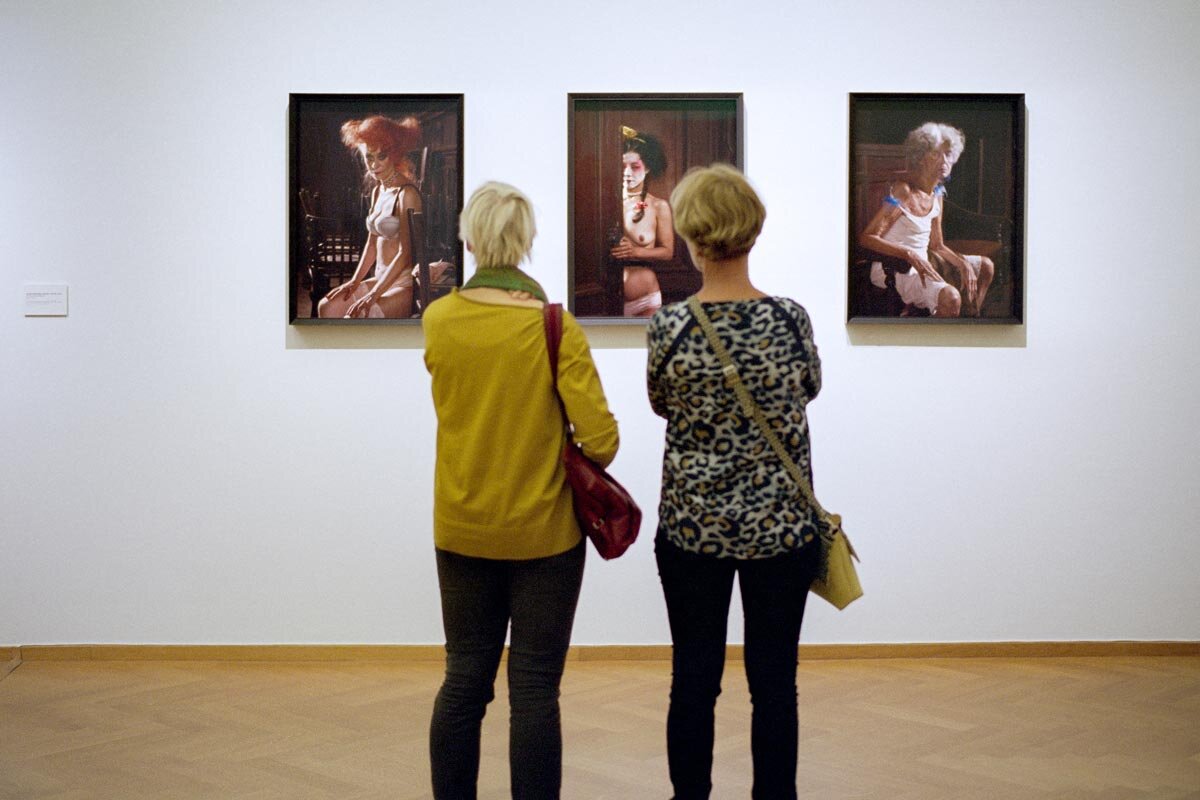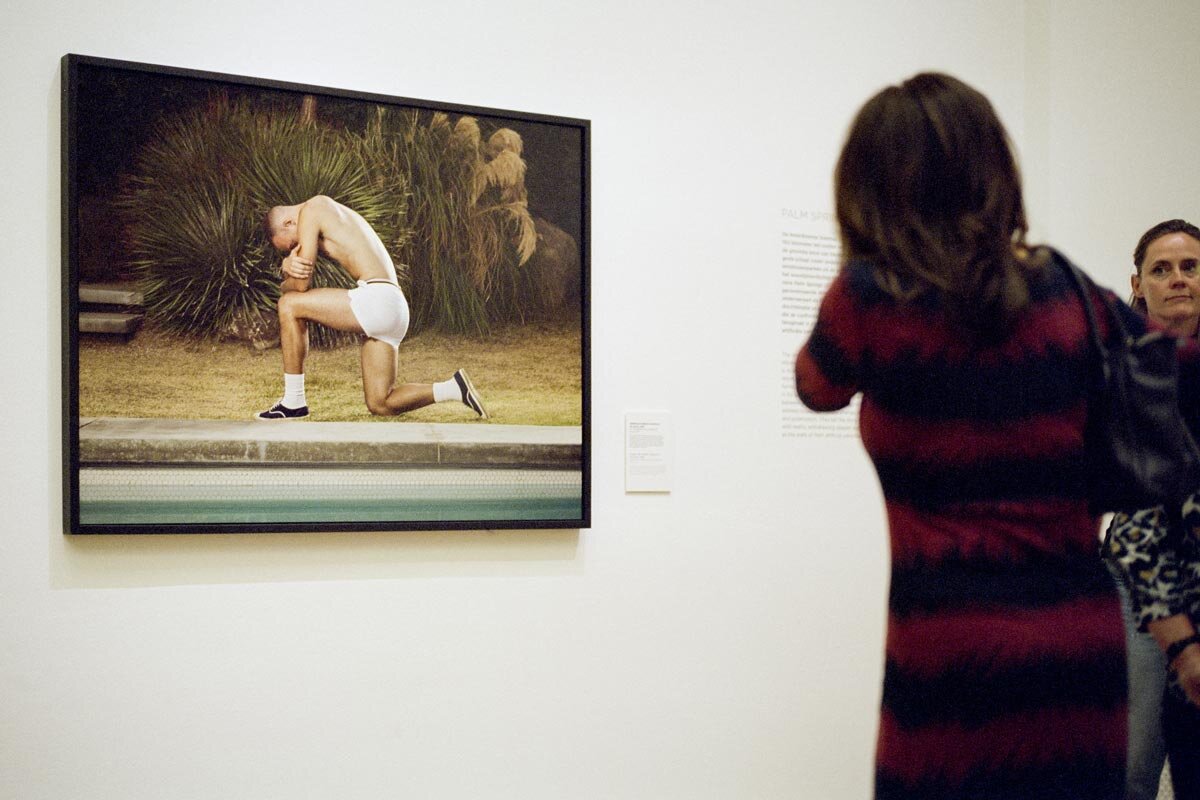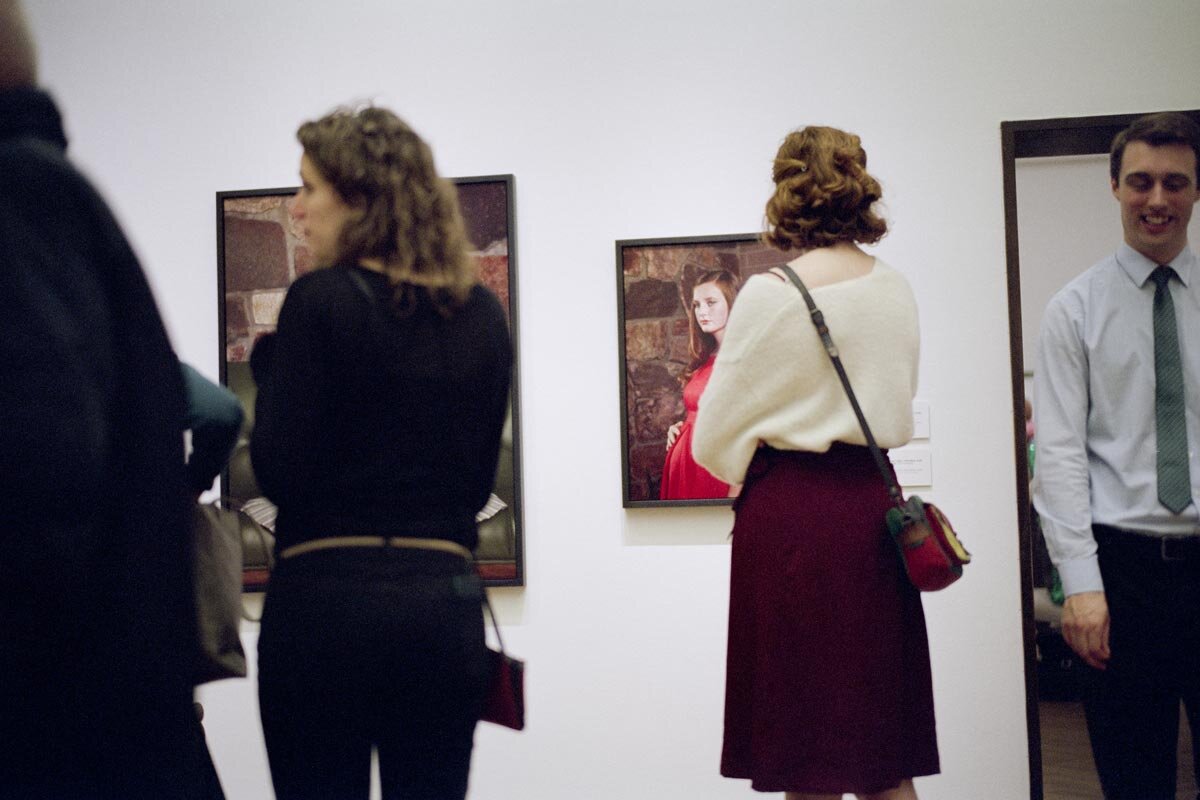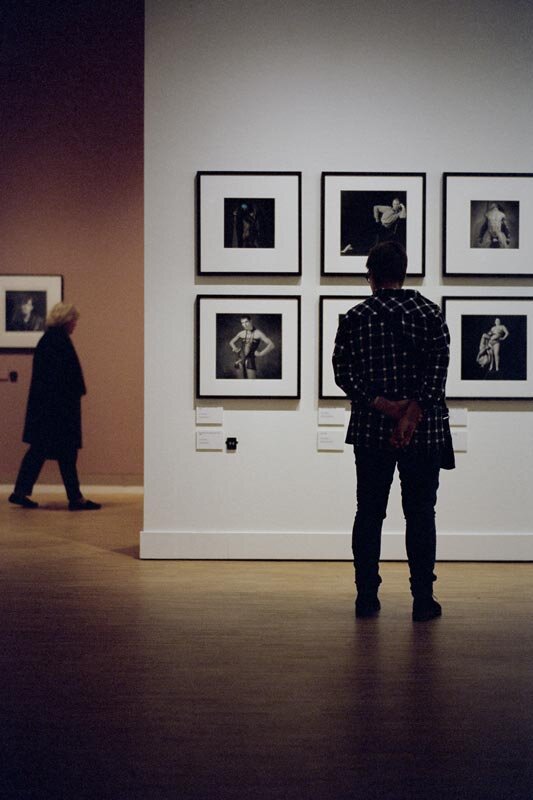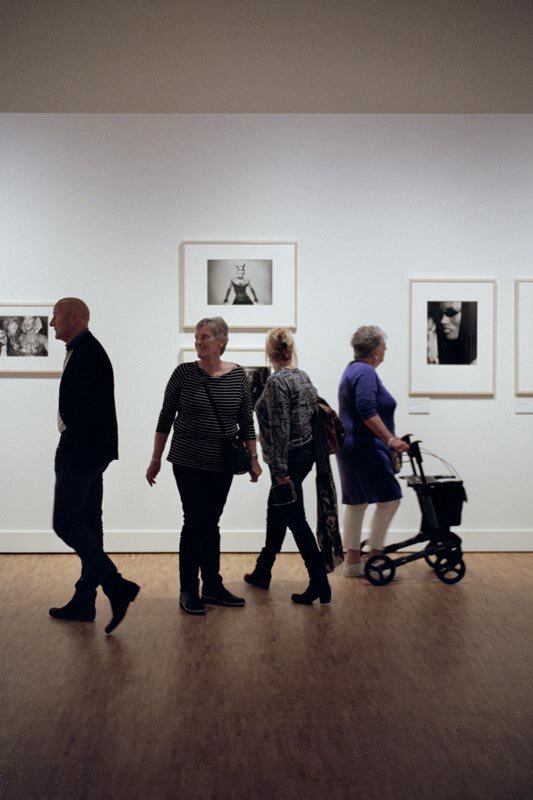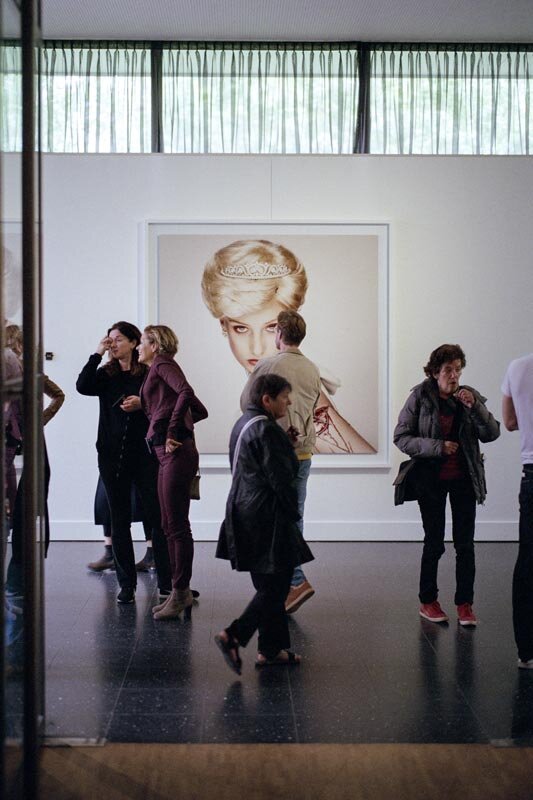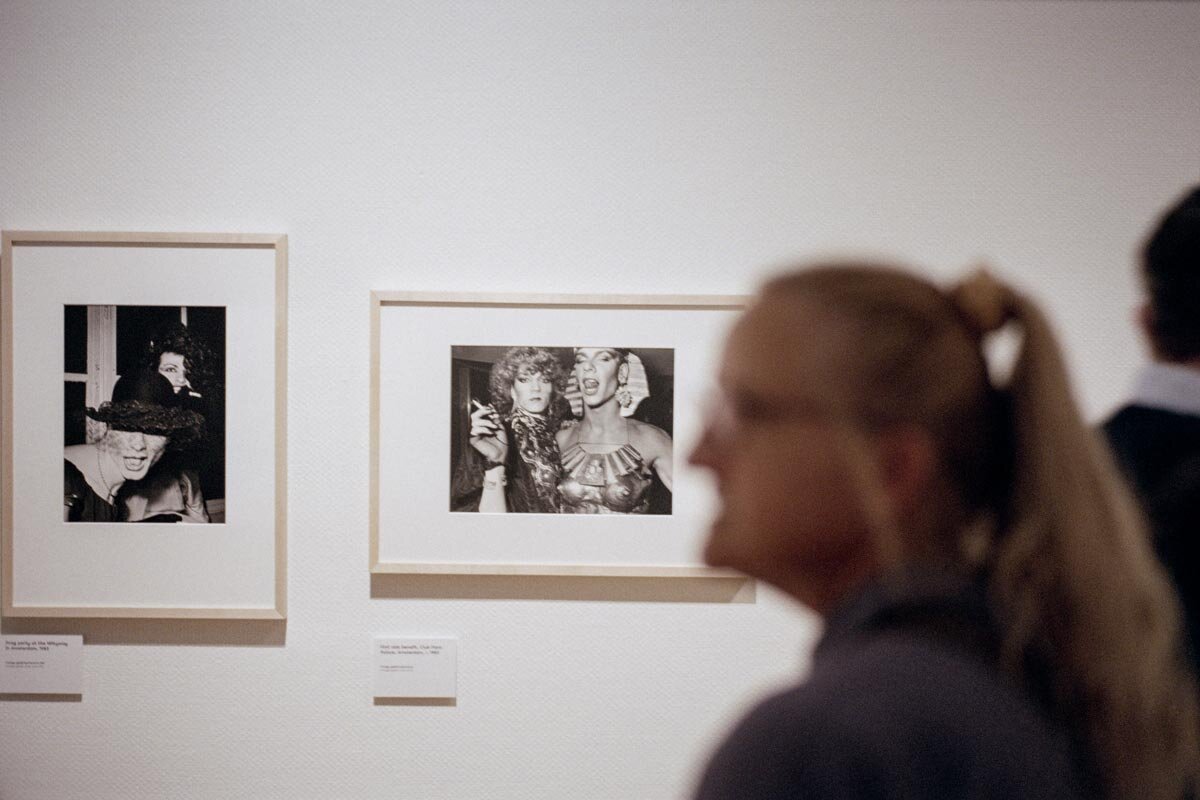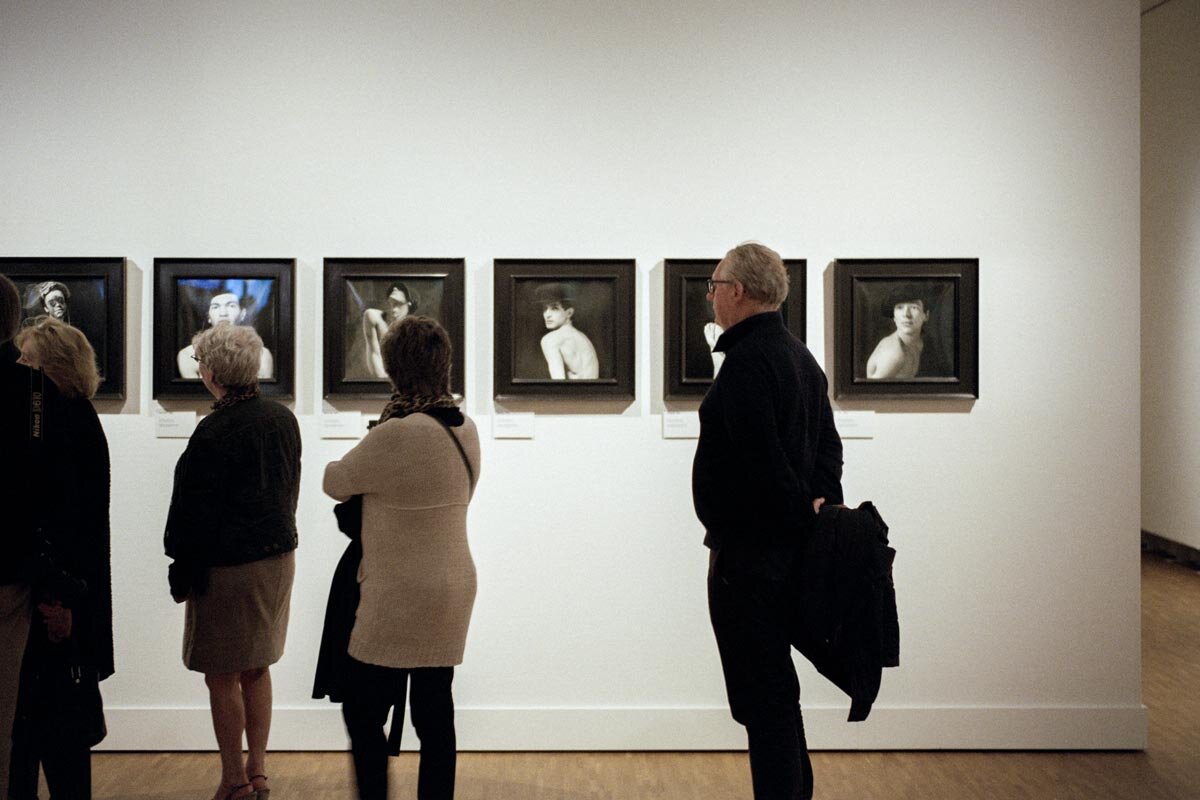This time last year the Kunstmuseum and the Fotomuseum here in The Hague hosted a large joint exhibition of Erwin Olaf’s work. I have a decades-long fascination with how people behave at exhibitions and I can’t help but bring a camera along whenever I go to one. It seems that the visitors unwittingly become part of the exhibition and that I, observing them observing the art through my camera, in some ‘meta’ way become removed from the spectacle. In a way, there are two parallel exhibitions, one displayed on the museum’s walls and one taking place in the exhibition space itself.
As for this particular exhibition I can’t say that I liked it very much, simply because I didn’t understand what he’s trying to say. The quote which the Kunstmuseum used in its marketing of the exhibition was this:
What I want to show most of all is a perfect world with a crack in it. I want to make the picture seductive enough to draw people into the narrative, and then deal the blow.
Honestly not a very nice thing at all to say. I mean, who wants to be dealt a blow?
But the main problem was that I didn’t see the narrative of which the quote speaks. To my (admittedly possibly somewhat dim) mind, it seems provocation is the end he’s reaching for time and time again, and it quickly got tedious. I did notice a softening of this striving for provocation over the course of his career, which I suspect is normal. One can’t be an enfant terrible one’s whole life. But even his arranged slightly eery portraits shot in the last ten years fail to show a compelling narrative, as competently executed as they are technically speaking.
Then we have the photos he was commissioned by the Dutch royal court to shoot. Oh my, where do I begin? They are a mix of corporate photography, Martin Schoeller’s Close Up and wedding photography. The one where they are walking towards the camera with…wait for it…wind in their hair is worthy of the Eurovision Song Contest. Not quite regal. In fact, all of the photographs, even those where the king and queen pose, lack the weight and presence required for this type of photography. Some may argue that monarchy is such an antiquated institution that it must be popularised if it is to remain relevant. That may be the case but there are monarchies which manage to maintain a balance, in terms of their photographic image, between being for the people and being of the people. The British and Swedish monarchies spring to mind here. This, I feel, was not achieved at all by Olaf’s series.
Shot with Leica M6TTL and the under-rated Leica 50 Summicron v. 3 on Fuji Pro 160S.
